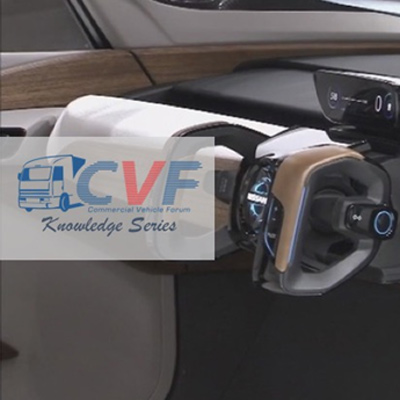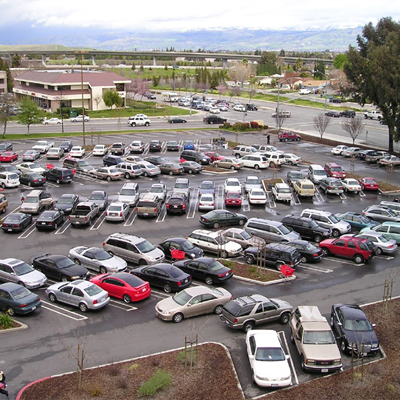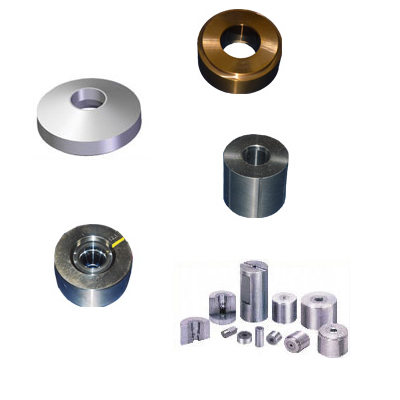Articles
Cleaning Solutions in the Automotive Industry - Achieving Cleanliness Reliably and Efficiently

Component cleanliness is a quality criterion in the motor vehicle industry. Requirements are becoming stricter and stricter with each vehicle generation - with simultaneously increasing cost pressure. And thus for the automotive industry and its suppliers it's becoming more and more important to exploit optimisation potential in the area of parts cleaning.
Global emphasis is being placed upon reducing CO2 emissions and fuel consumption, as well as increasing safety and comfort within the vehicle manufacturing industry. Downsized engines are in demand which run more efficiently with high power output, as are components that are capable of withstanding extreme loads and are distinguished by tight tolerances. However, this is only possible with high precision components – and this is associated with increased sensitivity to contamination. If they end up in the wrong place, even particles with sizes down to 500, 200 or even just 100 µm can cause damage and failure in the field. This is why, in the meantime, the automotive industry has started defining particle size distributions for certain parts in functional modules such as the power train, steering and brakes, for example no more than 1,000 particles between 100 and 200 µm, 500 particles between 200 and 400 µm etc. In order to fulfil and document these requirements, large investments in industrial parts cleaning technology are required in some cases. For example, based on calculations, the outlays required for cleaning technology which fulfils a specified requirement of “no particles larger than 1,000 µm” are two to three times higher than for systems in which cleaned parts are contaminated with larger particles.
Minimising Contamination
The issue of potential for economic optimisation in the parts cleaning process is pursued despite, or perhaps precisely due to the large investment sums involved in some cases. One approach is component design, because the geometry of the workpiece and the individual steps of the manufacturing process, for example turning, milling and assembly, as well as cleanability, are determined during the design stage. The latter usually plays no role at all, for which revenge is taken during the subsequent production process: The parts have corners, edges or drill holes from which particles and processing residues can only be removed with considerable effort, or not at all.
Due to the fact that material is removed during the course of chip-forming machining processes, contamination can never be entirely avoided. The quality of cooling lubricants and machining fluids influences the quantity of chips, burrs and particles on the workpieces. Suitable purification/filtration prevents previously washed away contamination from being returned to the component once again.
A special rinsing step with the tool in the machining centre – perhaps even with more finely purified fluid from a separate tank – can also make a contribution to reducing the number of chips. At first glance, this represents an additional expense. But it pays for itself later on in the manufacturing process thanks to shorter cleaning times and/or a longer bath service life, as well as better component quality. And residues which are removed after machining by means of mechanical pre-cleaning based on vibration, shaking, spinning or vacuum blasting the surfaces of the part do not place any unnecessary load on the cleaning agent.
In the case of multi-stage machining processes in metal forming and machining applications, intermediate cleaning steps prevent the accumulation of contamination, as well as any mixing or drying out of media on the workpieces.
Ideally Laid Out Cleaning Processes
Modern cleaning systems are capable of fulfilling even very high demands for component cleanliness – assuming the cleaning process has been ideally matched to the contamination to be removed, part geometry, the utilised material and the cleanliness specification to be complied with.
The limit value of “smaller than 1,000 µm” for components in engines and gearboxes can only be adhered to with a cleaning process which has been laid out specifically for the respective part. The current state-of-the-art makes use of a multi-stage procedure to this end. The workpieces are thus usually subjected to mechanical cleaning during the first step, which removes some of the adhering machining fluid. The second step involves immersion flooding: Water is injected into the cleaning chamber below the surface of the bath at a pressure of 10 to 15 bar. The resulting whirlpool effect rinses chips and contamination out of hollow spaces such as threaded blind holes. Water jet systems which are aimed at openings in the component, and lances which advance into holes, allow for optimised results within short periods of time. This applies as well to subsequent high-pressure cleaning or deburring. Rinsing is followed by a drying process.
Numerous engine and gearbox variants, as well as ever shorter product life cycles, necessitate a great deal of flexibility – even for individual part cleaning. This is accomplished by automated cleaning solutions with robots, which are integrated into the production line. Thanks to options provided for easy reprogramming, these assure levels of flexibility which are comparable to those offered by machining centres.
Large numbers of vehicle parts are cleaned in batch processes as individually positioned items or bulk goods. Single and multi-chamber systems which can be integrated into the production line are available for these cleaning tasks as well. A modular design with various interlinking options assures adaptability to specific requirements, as well as expandability in accordance with actual needs.
In addition to the utilised process technology and the medium, the container also has a great deal of influence on the results and the economic efficiency of the cleaning process. There are two primary questions in this respect: Are the parts in the container readily accessible from all sides for the medium and the washing mechanism? Is it possible to position the part within the container such that critical areas can be treated in a targeted fashion?
An additional requirement for efficient cleaning processes is the removal of loosened contamination from the cleaning bath so that it isn’t redeposited on the parts. In order to assure continuous particle removal, gentle but constant bath motion is necessary on the one hand, and effective filtration which is matched to the actual particle size is required on the other hand.
Aqueous Medium or Solvent
Wet chemical cleaning processes with aqueous media or solvents are generally used in the automotive industry. Aqueous media, available as alkaline, neutral and acidic cleaners, are used with preference where very large volumes of parts have to be cleaned and/or where fine cleaning and micro-cleaning are required. Their cleaning effectiveness is based on an organic or an inorganic builder and tensides. The latter are able to “push” themselves in between the contamination and the material to be cleaned, and dislodge non-polar contamination such as oil and grease, as well as polar contamination (e.g. emulsions, salts and particles). Continuous monitoring of the bath and bath replacement at regular intervals are necessary for consistently good results.
Aqueous media are also used for rinsing processing oils from auto body parts prior to zinc phosphating. The industry offers specially developed products in order to reduce bath maintenance expenses, which is frequently accomplished by means of ultrafiltration. Through the use of demulsifying tensides, they allow for the precipitation of oils introduced to the process, making it easier to remove them from the cleaning baths. Matched cleaning media are also available for the new, more environmentally compatible alternatives to zinc phosphating. They assure that not only oils on the components are removed: they reliably remove oxides as well.
Chlorinated hydrocarbons (CHCs), the traditional degreasers, assure especially effective degreasing and drying of metals – even for components with complex geometries. Particles which cannot be dissolved by the solvent, for example chips, are removed along with the oil because they are no longer able to adhere to the surface. Perchlorethylene (per) has proven its worth for cleaning safety relevant workpieces, for example parts used in air bags, brake systems and power steering systems. Due to its chemical-physical characteristics, it’s also frequently the solvent of choice when parts need to be cleaned which have been joined by means of soldering or welding, such as components in cooling and air-conditioning systems, as well as electrical plug contacts.
Non-halogenated hydrocarbons (HCs) provide good dissolving performance for animal, vegetable and mineral oils and grease, and demonstrate outstanding materials compatibility. Polar contaminations like salts from emulsions cannot be removed with non-polar hydrocarbons.
Functional Surface Cleaning Saves Time and Money
Due to cleanliness requirements which vary greatly for a single workpiece in some cases, targeted cleaning of specific component surfaces such as sealing, joining, bonding and laser welding surfaces may be advantageous. In these cases, conventional cleaning with aqueous media or solvents, after which the entire component demonstrates the same high degree of cleanliness as specified for the functional surface, is often associated with very high costs. In the face of increasing cost pressure within the manufacturing processes used by suppliers to the automotive industry, functional surface cleaning, for example by means of CO2 snow jet, laser or plasma processes, provides a viable approach to saving both time and money. A further advantage offered by functional surface cleaning integrated into the production process is the fact that the cleaned surface is made available just-in-time, thus eliminating any need to implement measures targeted at maintaining cleanliness after cleaning and during transport.
Caution: Recontamination
As soon as the parts leave the cleaning system, there’s a danger of recontamination. In order to prevent contamination with particles from the environment in the case of functionally critical components, it may be necessary to inspect, package and store them in a so-called clean zone, and to provide personnel who work there with appropriate clothing and gloves.
In the automotive industry, functionally critical cleaned components are transported and stored in appropriate packaging. These frequently consist of so-called VCI foils, which at the same time offer corrosion protection. Part-specific, deep-drawn sheet materials are also used which, like the small load carriers usually used for small parts (these are additionally lined with foil), have to be cleaned at regular intervals.
Infobox
parts2clean – leading international trade fair for industrial parts and surface cleaning
How much time and cost optimising potential is provided by parts cleaning in the automotive industry? With which processes can various components be cleaned both reliably and economically? Answers to these and other questions covering all aspects of parts cleaning in the motor vehicle industry are provided at parts2clean. The leading international trade fair for industrial parts and surface cleaning will take place at the Stuttgart Exhibition Centre (Germany) from the 23rd through the 25th of October, 2012. The exhibition portfolio encompasses systems, processes and process media for degreasing, cleaning, deburring and pre-treatment of parts, parts baskets and workpiece carriers, handling and process automation, cleanroom technology, quality assurance, test methods and analysis procedures, media treatment and disposal, job-shop cleaning, corrosion protection, preservation, packaging, research and technical literature.
Captions
Photo: LPW_Foto 1
Modular cleaning systems, which allow for adaptation in accordance with actual needs and integration into the production line, offer flexibility. Parts from diesel injection systems advance from the cleaning chamber to vacuum drying.
Image source: LPW Reinigungssysteme
Photo: PERO Reinraum
This system has been adapted such that cleaned parts are transported directly into a cleanroom by means of a sealed roller conveyor.
Image source: PERO
Photo: SAFECHEM cooler
When cleaning safety relevant components or workpieces which are joined by means of soldering or welding such as cooler system parts, economically optimised results can be obtained with perchlorethylene.
Image source: SAFECHEM
Photo: Metallform_WT-flex
Assuring that the parts in the container are readily accessible on all sides for the medium and the washing mechanism, and that targeted treatment of critical areas is possible, are essential factors for an optimised batch process.
Image source: Metallform Wächter
Photo: acp CO2_selektiv
n the face of increasing cost pressure within the manufacturing processes used by suppliers to the automotive industry, functional surface cleaning, for example by means of the CO2 snow jet process, provides a viable approach to saving both time and money.
Image source: acp
Photo: Gläser_Sauberkeitskontrolle
Cleaning in the automotive industry frequently involves more than just achieving the specified cleanliness requirements – inspection and documentation are required as well.
Image source: Gläser
Photo: Bantleon
VCI materials, which consist of powders, granules, liquids, impregnated foils, foams or paper, create a gas phase inside the closed package which protects against corrosion.
Image source: Hermann Bantleon




